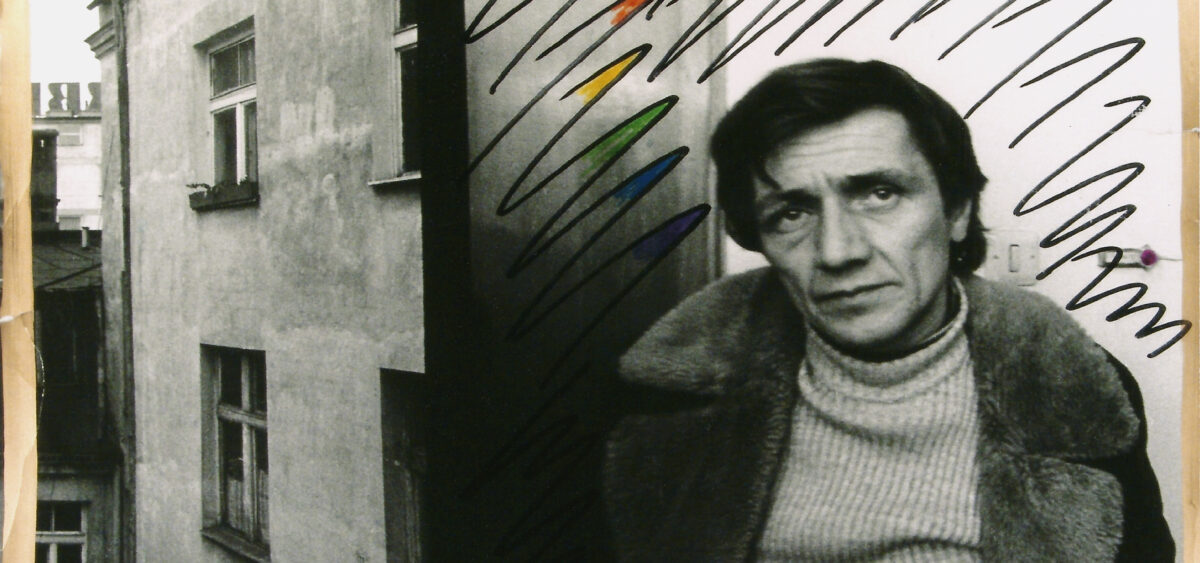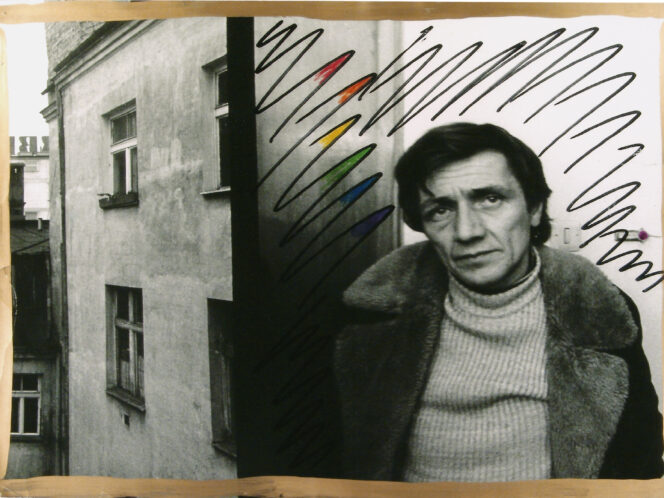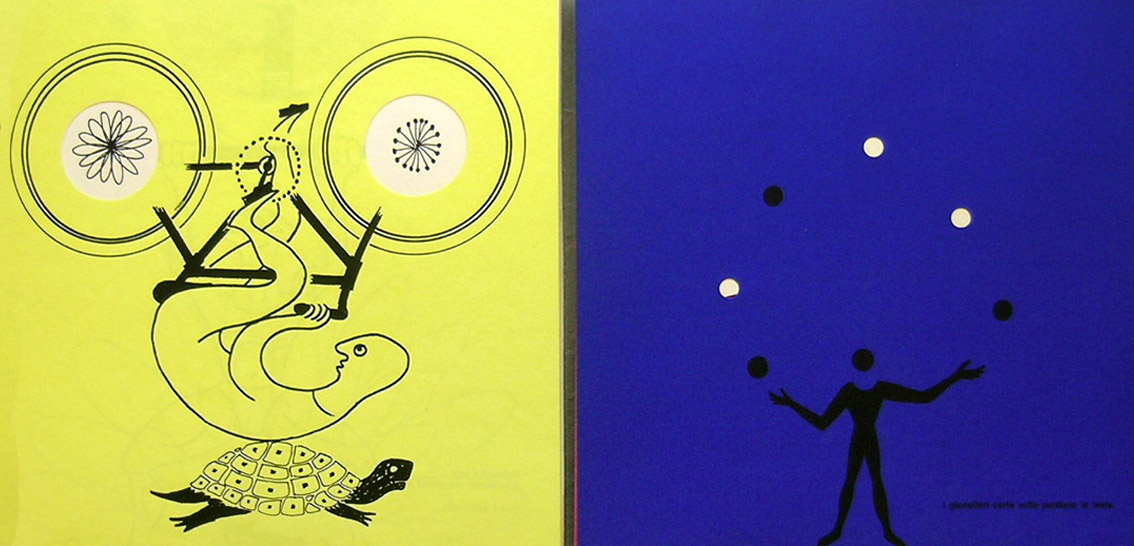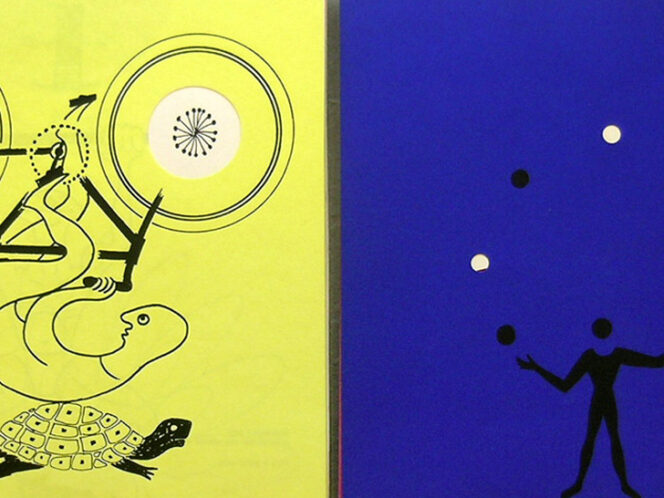
A vagabond, provocateur, opponent of the full-time avant-garde. He sent his art by post, he left a stink in a gallery. According to Julian Przyboś, he was mentally ill. According to some others, he was a great artist. His name was Andrzej Partum.
In fact, nobody knows where Andrzej Partum got his surname from. Did he inherit it from his father? Did he invent it himself? Or perhaps he owed it to the poetic inventiveness of his mother? According to the Latin dictionary, partum caesareum means ‘Ceasarean section’…
All we know is that the ‘King of Krakowskie Przedmieście’, as he was known among the metropolitan bohemia of the 1970s, was born Andrzej Mikiewicz in 1938 in Warsaw. History remains silent about his father, but we know that his mother, Maria Mikiewicz, was a painter. She died in the streets of Warsaw in August 1944, during one of the bombardments, allegedly in front of her children, Karina and, yes, Andrzej. Maria’s brother, the poet Konstanty Mikiewicz, appointed to military service before the war, committed suicide in 1935 in the Officer Cadet Artillery College in Zambrów. Karina, slightly older than Andrzej, died soon after the war in 1946. So little Partum was brought up by his mother’s sister, Krystyna Artyniewicz, an author of children’s theatre plays. Unfortunately, she also bereaved








